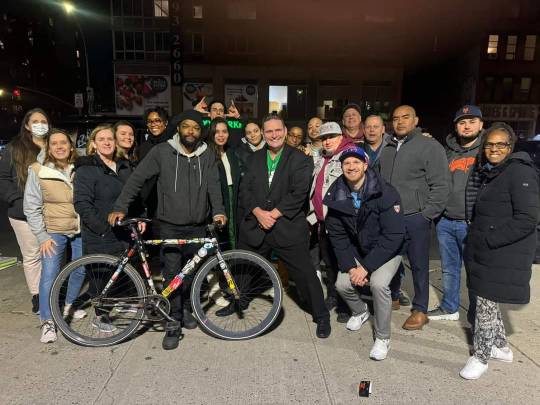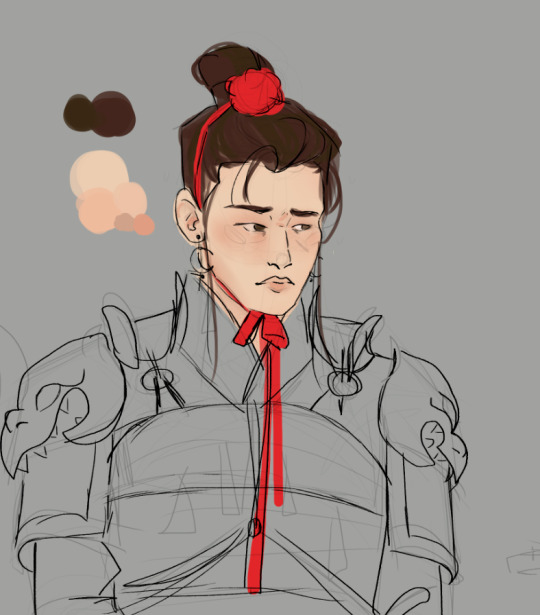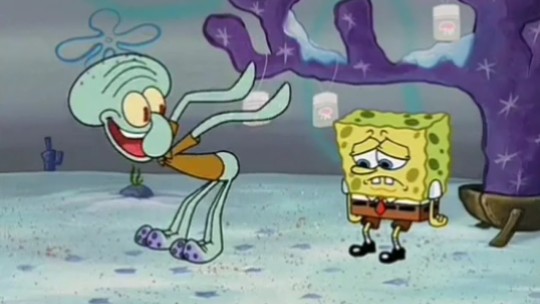#homeless support
Text
Homeless LGBT Couple needs support!

Hey everyone.
My partner and I are still homeless and we've been struggling for some time to meet our basic needs. We've been going hungry much more often and we keep losing shelter when we need it most. It's been raining a lot lately and my bronchitis has progressed to pneumonia with no sign of recovery yet so having a place to rest is super important right now. Any help we can get covering food, supplies, bills, and shelter in a motel room is greatly appreciated.
On a brighter note, our 20th anniversary is this month and, on April 12th, we will be getting married. It's a simple courthouse marriage for now, but that doesn't make it any less special to us. Please join us in hoping for the best going forward!
Venmo: @garbageconnoisseur
CashApp: $garbageconnoisseur
PayPal: @garbageconnoisseur
(Please no hate and no unsolicited advice. I can't deal with it right now and you will be blocked. Well wishes are welcome.)
1K notes
·
View notes
Text
So I can't edit this to show what it is exactly, but I basically just got shamed by a Facebook "friend" for offering to share this link to get laundry supplies for my birthday. So now I'm miserable and that wasn't what I'd wanted to happen at all.
So if anyone would like to cheer me up, this is my family's Homeless Supplies list. I need as much of the laundry and disinfectant stuff as I can get. Clothes for me (or even my mom, because she still needs pants) would be a huge help, as I lost 40 pounds last year and most of my stuff is too big or it's full of holes. Food is much appreciated by all three of us.
Can't help? Reblog. Don't care/don't want to help? Don't be an asshole about it. Just ignore me or block me or whatever. But I am thankful to everyone who has helped, everyone who continues to help us, and everyone who is inspired to help. It's basically a waiting game with disability at this point for us to get housing, so all I can do is wait and hope.
But yeah. If you can help, or even just reblog, it would remind me there are good people in the world, and I sorely need that as much as I need anything on the list.
#signal boost#mutual aid#mutual aid request#urgent#direct action#community aid#amazon wishlist#please boost#please reblog#please share#please help#anything helps#help needed#donations#homeless support#groceries#laundry detergent#clothing
645 notes
·
View notes
Text
Hey, my friend Suri is in a bad way. Her roommates stole everything from her and kicked her out of a place she had paid for. She really needs help getting back on her feet - a place to live, food to eat, and a new computer for her work. Please reblog and give what you can but if you do nothing else, please reblog!
#mutual aid#mutual aid request#black trans lives matter#black trans women#sex worker#houselessness#houseless black trans woman#homeless black women#Black trans sex worker#signal boost#signal b00st#fundraiser#gofundme#urgent#emergency#direct action#community aid#homeless support#paypal#venmo#cashapp#amazon wishlist#ko fi link#ko fi support#buy me a kofi#please boost#please share#please help#anything helps#help needed
9 notes
·
View notes
Text
You show me how to do 60
Again, as in the 1/15.2024 blog, an entry from Joshua Prager’s book 100 Years
Age 64
Sixty-four years old now, inching ever closer to senior citizenship, to the days of Medicare and Social Security benefits, to a time when more and more of your friends will have left you.
Paul Auster Winter Journal
My Marin note to above:
June 19, 2018. My last day of age 62
OMG WTF
That’s oldster talk!
Not Radical Elder talk!
Hit the gym!
The Jail.
Bradine, in his early 20’s, said to me “You show me how to do 60.”
Note:
Bradine was a young male friend of mine. We talked a lot about our lives. So, he knew that in my early 60’s I was in the gym a lot and way into the body. By 2015 I began to call myself a “Bodinist”! (A Lewism term I made up)
I also got way into helping the homeless. And, I enjoyed spending time with clients in the jail.
#6/19/2018#Radical Elder#100years Joshua Pregar#Age 64#in the gym in your 60's#homeless support#jail visits#criminal defense#relating to friend in his 20's
3 notes
·
View notes
Text




0 notes
Text
My boyfriend might lose his apartment because social security hasn’t come through yet for him. Can you please help? Please donate so he doesn’t become homeless? Please reblog!
#urgent#mutual fund#ebegging#signal boost#rent#veteran#homeless support#help plz#repost#newbedford#newbedfordguide#newbedfordma#newbedfordharbor#newbedfordmass#youtube#halloween#capecod#christmas#newengland#recovery#autumn#kat shares stuff#vegan#love#capecodinsta#truth#capecodlife#capecodinstagram
0 notes
Text

#abolish the police#police brutality#tweet#rip twitter#anarchy#twitter post#anti capitalism#leftism#communism#socialism#fuck cops#fuck the police#police violence#homelessness#homeless#poverty#financial assistance#support#financial aid#usa news#usa politics#united states#geopolitics#united states of america#americans#america
1K notes
·
View notes
Text

Hi! I got supper busy! and by busy I mean injured.
I'm fine but hey happy trans visiblity day!
totally unrelated but I have just been laying around distracting myself so now I have decided to once again draw a cast line up. All the martial gods for now, since I got to tweaking up the QYZ and YY one I'd already done and redoing my awfully huge poster thing I started like 4 years ago now. Doing it this way is more fulfilling to me, maybe one day I'll return to it but not now.











#i'm still figuring everything out thank you for your patience and support#i'm just so tired :)#sorry about the vent#my art#toasterfireart#wip#tgcf#tian guan ci fu#heaven official's blessing#tgcf fanart#back at it with my line ups because i'm unoriginal but i love these guys#pei ming#pei xiu#pei su#lang qianqiu#feng xin#xie lian#mu qing#quan yizhen#yin yu#yes I will still include yy as a god#he is so special to me#I have to say I'm obsessed with drawing everyone and xl is just there#the most powerful one there is just the homeless guy#love him
420 notes
·
View notes
Text
im a homeless black girl and just need money so i can buy food and afford hotel stays. i'm still looking for a stable freelance job and need all the help i can get to stay out of the cold. i'm also open for commissions.
pls boost if you see and donate if you can.
paypal
cashapp
gofundme

#signal boost#mutual aid#commission#commissions#commissions open#gofundme#fundraising#homeless#black lives matter#black history month#lgbtqia#lgbtq support
467 notes
·
View notes
Text
Paywall-free version
On the outskirts of Austin, Texas, what began as a fringe experiment has quickly become central to the city’s efforts to reduce homelessness. To Justin Tyler Jr., it is home.
Mr. Tyler, 41, lives in Community First! Village, which aims to be a model of permanent affordable housing for people who are chronically homeless. In the fall of 2022, he joined nearly 400 residents of the village, moving into one of its typical digs: a 200-square-foot, one-room tiny house furnished with a kitchenette, a bed and a recliner.
The village is a self-contained, 51-acre community in a sparsely populated area just outside Austin. Stepping onto its grounds feels like entering another realm.
Eclectic tiny homes are clustered around shared outdoor kitchens, and neat rows of recreational vehicles and manufactured homes line looping cul-de-sacs.
There are chicken coops, two vegetable gardens, a convenience store, art and jewelry studios, a medical clinic and a chapel.
Roads run throughout, but residents mainly get around on foot or on an eight-passenger golf cart that makes regular stops around the property.
Mr. Tyler chose a home with a cobalt-blue door and a small patio in the oldest part of the village, where residents’ cactus and rock gardens created a “funky, hippie vibe” that appealed to him. He arrived in rough shape, struggling with alcoholism, his feet inflamed by gout, with severe back pain from nearly 10 years of sleeping in public parks, in vehicles and on street benches.
At first, he kept to himself. He locked his door and slept. He visited the clinic and started taking medication. After a month or so, he ventured out to meet his neighbors.
“For a while there, I just didn’t want to be seen and known,” he said. “Now I prefer it.”
Between communal meals and movie screenings, Mr. Tyler also works at the village, preparing homes for the dozen or more people who move there each month.
In the next few years, Community First is poised to grow to nearly 2,000 homes across three locations, which would make it by far the nation’s largest project of this kind, big enough to permanently house about half of Austin’s chronically homeless population.
Tiny-home villages for people who have been homeless have existed on a small scale for several decades, but have recently become a popular approach to addressing surging homelessness. Since 2019, the number of these villages across the country has nearly quadrupled, to 124 from 34, with dozens more coming, according to a census by Yetimoni Kpeebi, a researcher at Missouri State University.
Mandy Chapman Semple, a consultant who has helped cities like Houston transform their homelessness systems, said the growth of these villages reflects a need to replace inexpensive housing that was once widely available in the form of mobile home parks and single room occupancy units, and is rapidly being lost. But she said they are a highly imperfect solution.
“I think where we’re challenged is that ‘tiny home’ has taken on a spectrum of definitions,” said Chapman Semple. Many of those definitions fall short of housing standards, often lacking basic amenities like heat and indoor plumbing, which she said limits their ability to meet the needs of the population they intend to serve.
But Community First is pushing the tiny home model to a much larger scale. While most of its homes lack bathrooms and kitchens, its leaders see that as a necessary trade-off to be able to creatively and affordably house the growing number of people living on Austin’s streets. And unlike most other villages, many of which provide temporary emergency shelter in structures that can resemble tool sheds, Community First has been thoughtfully designed with homey spaces where people with some of the highest needs can stay for good. No other tiny home village has attempted to permanently house as many people.
Austin’s homelessness rate has been rapidly worsening, and the city’s response has whipped back and forth... In October [2023], the official estimate put the number of people living without shelter at 5,530, a 125 percent increase from two years earlier. Some of that rise is the result of better outreach, but officials acknowledged that more people have become homeless. City leaders vowed to build more housing, but that effort has been slowed by construction delays and resistance from residents.
Meanwhile, outside the city limits, Community First has been building fast. [Note from below the read more: It's outside city limits because the lack of zoning laws keeps more well-off Austin residents from blocking the project, as they did earlier attempts to build inside the city.] In a mere eight years, this once-modest project has grown into a sprawling community that the city is turning to as a desperately needed source of affordable housing. The village has now drawn hundreds of millions of dollars from public and private sources and given rise to similar initiatives across the country.
This rapid growth has come despite significant challenges. And some question whether a community on the outskirts of town with relaxed housing standards is a suitable way to meet the needs of people coming out of chronic homelessness. The next few years will be a test of whether these issues will be addressed or amplified as the village expands to five times its current size.
-via New York Times, January 8, 2024. Article continues below (at length!)
The community versus Community First
For Alan Graham, the expansion of Community First is just the latest stage in a long-evolving project. In the late 1990s, Mr. Graham, then a real estate developer, attended a Catholic men’s retreat that deepened his faith and inspired him to get more involved with his church. Soon after, he began delivering meals as a church volunteer to people living on Austin’s streets.
In 1998, Mr. Graham, now 67, became a founder of Mobile Loaves and Fishes, a nonprofit that has since amassed a fleet of vehicles that make daily rounds to deliver food and clothing to Austin’s homeless...
Talking to people like Mr. Johnston [a homeless Austin resident who Graham had befriended], Mr. Graham came to feel that housing alone was not enough for people who had been chronically homeless, the official term for those who have been homeless for years or repeatedly and have physical or mental disabilities, including substance-use disorders. About a third of the homeless population fits this description, and they are often estranged from family and other networks.
In 2006, Mr. Graham pitched an idea to Austin’s mayor: Create an R.V. park for people coming out of chronic homelessness. It would have about 150 homes, supportive services and easy access to public transportation. Most importantly, it would help to replace the “profound, catastrophic loss of family” he believed was at the root of the problem with a close-knit and supportive community.
The City Council voted unanimously in 2008 to lease Mr. Graham a 17-acre plot of city-owned land to make his vision a reality. Getting the council members on board, he said, turned out to be the easy part.
When residents near the intended site learned of the plan, they were outraged. They feared the development would reduce their property values and invite crime. One meeting to discuss the plan with the neighborhood grew so heated that Mr. Graham was escorted to his car by the police. Not a single one of the 52 community members in attendance voted in favor of the project.
After plans for the city-owned lot fell apart and other proposed locations faced similar resistance, Mr. Graham gave up on trying to build the development within city limits.
In 2012, he instead acquired a plot of land in a part of Travis County just northeast of Austin. It was far from public transportation and other services, but it had one big advantage: The county’s lack of zoning laws limited the power of neighbors to stop it.
Mr. Graham raised $20 million and began to build. In late 2015, Mr. Johnston left the R.V. park he had been living in and became the second person to move into the new village. It grew rapidly. In just two years, Mr. Graham bought an adjacent property, nearly doubling the village’s size to 51 acres and making room for hundreds more residents.
And then in the fall of 2022, he broke ground on the largest expansion yet: Adding two more sites to the village, expanding it by 127 acres to include nearly 2,000 homes.
“No one ever really did what they first did, and no one’s ever done what they’re about to do,” said Mark Hilbelink, the director of Sunrise Navigation Center, Austin’s largest homeless-services provider. “So there’s a little bit of excitement but also probably a little bit of trepidation about, ‘How do we do this right?’”
What it takes to make a village
Since he moved into Community First eight years ago, Mr. Johnston has found the stability that eluded him for so long. Most mornings, he wakes up early in his R.V., feeds his scruffy adopted terrier, Amos, and walks a few minutes down a quiet road to the village garden, where neat rows of carrots, leeks, beets and arugula await his attention.
Mr. Johnston worked in fast-food restaurants for most of his life, but he learned how to garden at the village. He now works full time cultivating produce for a weekly market that is free to residents.
“Once I got here, I said, This is where I’m going to spend pretty much my entire life now,” Mr. Johnston said.
Everyone at the village pays rent, which averages about $385 a month. The tiny homes that make up two-thirds of the dwellings go for slightly lower, but have no indoor plumbing; their residents use communal bathhouses and kitchens. The rest of the units are R.V.s and manufactured homes with their own bathrooms and kitchens.
Like Mr. Johnston, many residents have jobs in the village, created to offer residents flexible opportunities to earn some income. Last year, they earned a combined $1.5 million working as gardeners, landscapers, custodians, artists, jewelry makers and more, paid out by Mobile Loaves and Fishes.
Ute Dittemer, 66, faced a daily struggle for survival during a decade on the streets before moving into Community First five years ago with her husband. Now she supports herself by painting and molding figures out of clay at the village art house, augmented by her husband’s $800 monthly retirement income. A few years ago, a clay chess set she made sold for $10,000 at an auction. She used the money to buy her first car.
“I’m glad that we are not in a low-income-housing apartment complex,” she said. “We’ve got all this green out here, air to breathe.”
A small number of residents have jobs off-site, and a city bus makes hourly stops at the village 13 times a day to help people commute into town.
But about four out of five residents live on government benefits like disability or Social Security. Their incomes average $900 a month, making even tiny homes impossible to afford without help, Mr. Graham said.
“Essentially 100 percent of the people that move into this village will have to be subsidized for the rest of their lives,” he said.
For about $25,000 a year, Mr. Graham’s organization subsidizes one person’s housing at the village. (Services like primary health care and addiction counseling are provided by other organizations.) So far, that has been paid for entirely by private donations and in small part from collecting rent.
This would not be possible, Mr. Graham said, without a highly successful fund-raising operation that taps big Austin philanthropists. To build the next two expansions, Mr. Graham set a $225 million fund-raising goal, about $150 million of which has already been obtained from the Michael and Susan Dell Foundation, the founder of the Patrón Spirits Company, Hill Country Bible Church and others.
Support goes beyond monetary donations. A large land grant came from the philanthropic arm of Tito’s Handmade Vodka, and Alamo Drafthouse, an Austin-based cinema chain, donated an outdoor amphitheater for movie screenings. Top architectural firms competed for the chance to design energy-efficient tiny homes free of charge. And every week, hundreds of volunteers come to help with landscaping and gardening or to serve free meals.
Around 55 residents, including 15 children, live in the village as “missionals” — unpaid neighbors generally motivated by their Christian faith to be part of the community.
All missionals undergo a monthslong “discernment process” before they can move in. They pay to live in R.V.s and manufactured homes distinguished by an “M” in the front window. Their presence in the community is meant to guard against the pitfalls of concentrated poverty and trauma.
“Missionals are our guardian angels,” said Blair Racine, a 69-year-old resident with a white beard that hangs to his chest. “They’re people we can always call. They’re always there for us.”
After moving into the village in 2018, Mr. Racine spent two years isolated in his R.V. because of a painful eye condition. But after an effective treatment, he became so social that he was nicknamed the Mayor. Missional residents drive him to get his medication once a week, he said. To their children he is Uncle Blair.
Though the village is open to people of any religious background, it is run by Christians, and public spaces are adorned with paintings of Jesus on the cross and other biblical scenes. The application to live in the community outlines a set of “core values” that refer to God and the Bible. But Mr. Graham said there is no proselytizing and people do not have to be sober or seek treatment to live there.
Mr. Graham lives in a 399-square-foot manufactured home in the middle of the village with his wife, Tricia Graham, who works as the community’s “head of neighbor care.” He said they do not have any illusions about solving the underlying mental-health and substance-use problems many residents live with, and that is not their goal.
“This is absolutely not nirvana,” Mr. Graham said. “And we want people to understand the beauty and the complexity of what we do. I wouldn’t want to be anywhere else on the face of the planet than right here in the middle of this, but you’re not fixing these things.” ...
From an experiment to a model
Community First has already inspired spinoffs, with some tweaks. In 2018, Nate Schlueter, who previously worked with the village’s jobs program, opened Eden Village in his hometown, Springfield, Mo. Unlike in Community First, every home in Eden Village is identical and has its own bathroom and kitchen. Mr. Schlueter’s model has spread to 12 different cities with every village limited to 50 homes or fewer.
“Not every city is Austin, Texas,” Mr. Schlueter said. “We don’t want to build a large-scale village. And if the root cause of homelessness is a loss of family, and community is something that can duplicate that safety net to some extent, to have smaller villages to me seemed like a stronger community safety net. Everybody would know each other.”
The rapid growth of Community First has challenged that ideal. In recent years, some of the original missional residents and staff members have left, finding it harder to support the number of people moving into the village. Steven Hebbard, who lived and worked at the village since its inception, left in 2019 when he said it shifted from a “tiny-town dynamic” where he knew everyone’s name to something that felt more like a city, straining the supportive culture that helped people succeed.
Mobile Loaves and Fishes said more staff members had recently been hired to help new residents adjust, but Mr. Graham noted that there was a limit to what any housing provider could do without violating people’s privacy and autonomy.
Despite these concerns, the organization, which had been run entirely on private money, has recently drawn public support. In January 2023, Travis County gave Mobile Loaves and Fishes $35 million in American Rescue Plan Act funds to build 640 units as part of its expansion.
Then four months later came a significant surprise: The U.S. Department of Housing and Urban Development approved the use of federal housing vouchers, which subsidize part or all of a low-income resident’s rent, for the village’s tiny homes. This will make running the village much more financially sustainable, Mr. Graham said, and may make it a more replicable blueprint for other places.
“That’s a big deal for us, and it’s a big deal on a national basis,” Mr. Graham said. “It’s a recognition that this model, managed the way that this model is, has a role in the system.”
Usually, the government considers homes without indoor plumbing to be substandard, but, in this case, it made an exception by applying the housing standards it uses for single-room-occupancy units. The village still did not meet the required ratio of bathrooms per person, but at the request of Travis County and the City of Austin’s housing officials, who cited Austin’s “severe lack of affordable housing” that made it impossible for some homeless people with vouchers to find anywhere else to live, HUD waived its usual requirements.
In the waiver, a HUD staffer wrote that Mr. Graham told HUD officials over the phone that the proportion of in-unit bathrooms “has not been an issue.” But in conversations with The Times, other homeless-service providers in Austin and some village residents said the lack of in-unit bathrooms is one of the biggest problems people have with living there. It also makes the villages less accessible to people with certain disabilities and health issues that are relatively common among the chronically homeless....
Mr. Graham said that with a doctor’s note, people could secure an R.V. or manufactured home at the village, although those are in short supply and have a long waiting list. He said the village’s use of tiny homes allowed them to build at a fraction of the usual cost when few other options existed, and helps ensure residents aren’t isolated in their units, reinforcing the village’s communal ethos.
“If somebody wants to live in a tiny home they ought to have the choice,” Mr. Graham said, “and if they are poor we ought to respect their civil right to live in that place and be subsidized to live there.” But he conceded that for some people, “this might not be the model.”
“Nobody can be everything for everyone,” he said.
By the spring of 2025, Mr. Graham hopes to begin moving people into the next phase of the village, across the street from the current property. The darker visions some once predicted of an impoverished community on the outskirts of town overtaken by drugs and violence have not come to pass. Instead, the village has permanently housed hundreds of people and earned the approval and financial backing of the city, the county and the federal government. But for the model to truly meet the scale of the challenge in Austin and beyond, Chapman Semple said, the compromises that led to Community First in its current incarnation will have to be reckoned with.
“We can build smaller villages that can be fully integrated into the community, that can have access to amenities within the community that we all need to live, including jobs and groceries,” Chapman Semple said. “If it’s a wonderful model then we should be embracing and fighting for its inclusion within our community.”
-via New York Times, January 8, 2024
#housing crisis#unhoused#homelessness#homeless#housing#affordable housing#austin texas#austin#texas#texas news#united states#usa#poverty#cost of living#tiny home#tiny house#social support#community#good news#hope
374 notes
·
View notes
Text
Help Our Homeless Queer Squatter Camp to Raise $80 for Refilling Our Community Water Tanks!
April 13th 2024

My girlfriend and I are two transgender homeless women living in Slab City, a homeless squatter town in the middle of the desert.
We live in one of the poorest communities in the United States. None of our neighbors have access to water or other utilities that they don't have delivered to tanks or otherwise provide for themselves.
Summer is rapidly approaching and the heat reaches 120°F
Our camp is dedicated to helping our neighbors and our community. As such, one of our services we provide is two gallons of free water per person per a day.
We don't have an income outside of whatever donations we raise and so if we can't raise money we can't help people.
Please help us raise $80 to fill our water tanks so we can continue to provide this service!
💕 Cash App: $ThistleDD
💕 Venmo: @ThistleDD
💕 PayPal: PayPal.me/ThistleDD
If you can't donate please like, reblog, and share. Every bit of help counts!
2K notes
·
View notes
Text
Homeless LGBT Couple Needs Help!

Hello everyone.
My partner and I have been homeless for a bit and we recently had to move cities after losing employment. We have been struggling to keep sheltered as the weather gets colder and wetter and, with me being increasingly ill, we need all the help we can get to meet our basic needs. We have no food and we are struggling day to day to cover bills and shelter costs while we look for work. I can't do this without help and my mental health is crashing in a big way so any help is greatly appreciated. I'm really running out of steam here.
Venmo: @garbageconnoisseur
CashApp: $garbageconnoisseur
Reach out for PayPal or Zelle.
(Please, no hate and no unsolicited advice. I cannot deal with the stress right now so you will be blocked.)
1K notes
·
View notes
Text
Please Help A Homeless, Disabled & Mostly Queer Family Get Ready For Housing By Helping With Paying For Much-Needed Loans!
PAYPAL | AMAZON WISHLIST | KOFI | GOFUNDME
VENMO: @penaltywaltz | CASHAPP: $afteriwake23 | ZELLE: DM me for email address
4/25/24 - New Post
So last week, I had the county share my County of San Diego Section 8 housing application (which I've been waiting on for 17 years) with the City of Oceanside Housing Office, which is the city where I currently have a three-bedroom house waiting for us. So we're still waiting to hear if they'll bump me up on the Oceanside list, but yeah. That's where housing currently stands.
To pay off many immediate bills, I had to take out a bunch of payday loans and two longer-term loans (which weren't for much, but the repayment rates were reasonable). This is what I still need:
$255 for my loan from Speedy Cash (due by April 26th)
$300 for my loan from Ace Cash Express (due by May 2nd)
$486.86 for my loan from Moneylion (due May 2nd)
$177 for my loan payment from Green Arrow Loans (due May 3rd)
$277 for my loan payment from Greenline Loans (due May 3rd)
$546.90 for my mom's loan from Moneylion (due by May 15th)
$285 for my Moneytree loan (due by May 25th)
$285 for my mom's Moneytree loan (due by May 26th)
I listed them in order of priority so any help with these would be amazing. If I can get this month's batch of loan payments paid off, I shouldn't need much help next month. In May I have to cover all three storage units (I think) so if I can get help with the first five loan payments listed, I should be able to cover them and still be able to cover immediate expenses.
$516/2613 (Total Goal)
$516/$1496 (Immediate Goal)
#signal boost#mutual aid#mutual aid request#urgent#emergency#time sensitive#community aid#gofundme#venmo#paypal#zelle#cashapp#amazon wishlist#ko fi link#buy me a coffee#buy me a kofi#ko fi support#financial assistance#financial aid#direct action#crowdfunding#fundraising#please boost#please reblog#please share#please help#help needed#anything helps#bills#homeless support
192 notes
·
View notes
Text

Donations Requested
This is always really hard to do but I've been going through really difficult times these last few months and it would help if you could donate here
I have a temporary place to stay but I've been homeless since April 1st. Alot of places near me have rent in the $700 to $1,000+ area which is massively outside my range (the only one I've seen in my price range had no ac 😭 it's already hit 80°f this spring)
I've been working with different resources to help find housing and support (such as SNAP) but they take time. It's been so much these past three months and I'm starting to burn out.
I'll be putting donations towards costs such as: my monthly storage rental, groceries (snap pending), medicine, doctor appointments, security deposit when I find a potential apartment, and filling my car up with gas.


I have a Kofi, with a backlog of art and a discord server. I've also been playing around with a new app on the iPad if anyone wants to request doodles for donations over $10 (examples above)
I appreciate any and all help <3
#mutual fund#financial assistance#Homeless#artist on kofi#ko fi support#artist on tumblr#my art#star's art#donations#I don't want to get too much into detail#But the system failed me#I filed an EPO against my ex and it got dismissed#He even outed me to the judge#transgender support#Once I get my stuff I can fullfil etsy orders too#And hopefully I can take full commissions soon
173 notes
·
View notes
Text
i hope we continue to see more protests within the US military. i see a lot of leftists and folks who are anti-military who have such an open disdain for the people who are in the military, yet neglect to considering the conditions this country makes to produce ideology, poverty, and the illusion of choice to make all kinds of people choose to enlist in the military. You ever see those videos of ROTC kids recording each other asking why they joined the military and everyone's like, "healthcare", "it helped me go to college", "I was bored" or "free ptsd lol". I hate to remind everyone but folks who are in the military are people, too, and they are the same victims and perpetrators of violence as the rest of you, we have all been shallowly conditioned to view each other as enemies just because one person is wearing army greens and the other is not.
some of the biggest anti-war advocates are those who engaged in war. Veterans who genuinely believed they were protecting the US against "terrorism" come back with blood on their hands, and they choose to realize that it was US imperialism that forced them to carry out violence, instead of doubling down and shielding themselves from the fact that they too are capable of atrocities... This is a class of people who are intentionally conditioned to be as poor and as ideologically aligned to US imperialism so that the military has a never-ending pool to send their youth to destroy other country's youth. The only people I have ever heard say "do not join the military" are those who ARE military.
This is in no way to ever excuse or explain away any of the atrocious war crimes and violence this industry and its people have committed against others. What I am saying is that we absolutely cannot cast aside the individuals who have been victimized within US imperialism, even if they are wearing army greens. I was speaking with my Palestinian classmate last week and another classmate--a member of the US air force-- walked up to me and struck up a conversation. My military classmate showed me her new bird, bid both of us goodbye, and left. My Palestinian classmate asked me if I was close with her, and I said we talked quite often, and she said, "I never met a person who's in the military. I still hate the military, but I never knew that they did, too. I didn't realize that they were also victims."
If my Palestinian classmate--one who is actively watching her own community die--can understand that it is not individuals who are the problem but it is in fact systems, US imperialism, white supremacy, capitalism...why can't we all? And she has EVERY reason to hate any individual military member. A lot of online activism just creates more barriers. if your optics look bad, complicated, or contradictory, you are cast aside. Everyone has got the be the perfect activist, you can never make a mistake or share a half-baked thought, you should always believe every word from a marginalized persons mouth (because being marginalized doesn't mean you're not entrenched in white supremacy too!) and you should never question what you see...Do you know what you sound like? The very imperialists who are convincing poor whites to vote against themselves. Perfectionism is white supremacy. Black & white thinking is white supremacy.
I'd rather have a military member who genuinely believed in the US imperialism machine but was disillusioned after being deployed as my comrade than some leftist who cherishes the performance of "being a good person". I don't want "good people" in our movements. I want humans who care. I want humans who make mistakes and who learn from them. I want humans who accept the messiness of a person. I want humans who hold others accountable and allow themselves to take responsibility for their actions. I want people who change for themselves and others.
fight systems, not individual people. we can change each other, but if we're too preoccupied looking like the World's Perfect Activists, we will only consume each other alive. Connect to your fellow humans, forever and always.
#muertotalks#a mind dump after seeing so much come out after the self immolation of the us air force member#i know hes not the first one to self immolate for palestine#and he might not be the last#i hate the military#i really fucking do#but i choose to see the people within them as victims within the overall system just like the rest of us#i will never go through what they did to make them choose to enlist#i never struggled with poverty homelessness healthcare or social acceptance#i wont shame them#shame is not productive#i want them to know there are civilians who support their protests#i want them to know that we their allies too#a note on my palestinian classmate#if youre arab or also a colonized person impacted by the us military feel free to hate every member of the military#i dont intend to police yall in how you choose to feel your anger#im angry with you#the point i mean to make is about understanding and compassion#someone who has every right to hate these people still chose to see them as the people they are#yes i even want the best for the “bad” people in the military too#i dont want these people to continue the ideology but we cant stop that without dismantling these systems#and we cant do that without creating spaces for healing and reform and growth#so many thoughts so many thoughts#none of this is easy#i fight daily against impulsively hating the world#everyday is a fight to choose compassion and understanding#but being a leftist and doing leftism is not fucking easy#if you genuinely think it is it isnt#and you may be missing the point of what leftism is#anyway
180 notes
·
View notes
Text
Illinois Governor JB Pritzker has signed a bill that is aimed at fighting homelessness.
Called “Home IL,” it will bring state agencies, nonprofit organizations and other advocates together. The bill focuses on an equity-based approach, which includes the voices and contributions of those who have experience homelessness.
It codifies the collaboration to move Illinois to “functional zero” homelessness by bolstering the safety net, targeting high-risk populations, expanding affordable housing, securing financial stability for unhoused individuals and closing the mortality gap.
“Every person deserves access to safe shelter and the dignity that comes with housing,” Pritzker said. “This is a first-of-its-kind multi-agency cooperative effort — bringing together state agencies, nonprofit organizations, advocates, and people with lived experience to prevent and end homelessness. I’m grateful for their dedication and believe that together, we can prevent and end homelessness once and for all.”
Rockford has already taken strides in this aspect. In 2017, it became the first community to reach “functional zero” levels among veterans and the chronically homeless.
Illinois’ Interagency Task Force and Community Advisory Council works across 17 state departments and agencies, as well as over 100 processes, programs and policies, to develop a comprehensive plan to combat homelessness.
The goal of the plan is to prevent shelter entry or ensure that shelter stays are limited and lead to quick transitions into stable living situations.
Pritzker has also committed about $360 million for the initiative in his FY24 budget. These investments include:
• $118 million to support unhoused populations seeking shelter and services, including $40.7 million in the Emergency and Transitional Housing Program.
• $50 million in Rapid ReHousing services for 2,000 households, including short-term rental assistance and targeted support for up to two years.
• $40 million in Permanent Supportive Housing (PSH) Capital funds to develop 90+ new PSH units providing long term rental assistance and case management.
• $37 million in Emergency Shelter capital funds to create more than 460 non-congregate shelter units.
• $35 million for supportive housing services, homeless youth services, street outreach, medical respite, re-entry services, access to counsel, and other shelter diversion supports.
• $21.8 million to provide homelessness prevention services to approximately 6,000 more families.
• $30 million for court-based rental assistance.
• $15 million to fund Home Illinois Innovations Pilots.
• $12.5 million to create 500 new scattered site PSH units.
“People experiencing the trauma of housing instability are our neighbors and community members who deserve to be treated with humanity and dignity. With this cooperative effort, Illinois is ensuring our state agencies can continue to collaborate, and that stakeholders are at the table with us, to support our most vulnerable in living healthy, well, and with dignity.” Lieutenant Governor Juliana Stratton said. “Our state is making it clear that we will continue to work together so we can all move forward, and we will focus on holistic strategies that bring us closer to ending homelessness in our state.”
#us politics#news#my state line#Illinois#gov. j.b. pritzker#2023#homeless#homelessness#house the homeless#houselessness#Home IL#end homelessness#expand affordable housing#mortality gap#Illinois’ Interagency Task Force and Community Advisory Council#Emergency and Transitional Housing Program#Permanent Supportive Housing#Emergency Shelter#supportive housing services#homeless youth services#street outreach#medical respite#access to counsel#homelessness prevention services#court-based rental assistance#Home Illinois Innovations Pilots#Juliana Stratton#progressivism#progressives#Democrats
518 notes
·
View notes